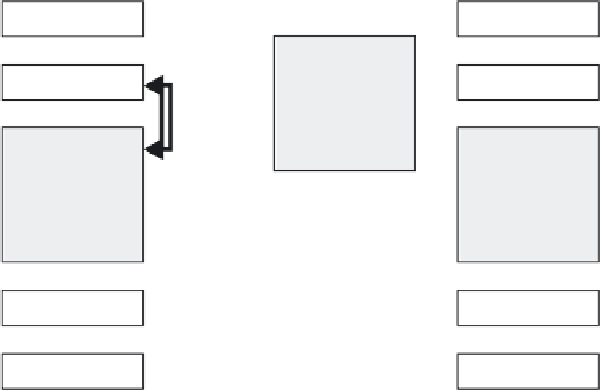Java Reference
In-Depth Information
ware, communications lines and devices, mouse, keyboard, and disk stor-
age are all shared. Each program operates in its own private memory
space, with limited access to other memory areas. Hardware devices are
controlled by the operating system, which grants access to applications
at its discretion and under its control. The library of services that is made
available to applications by a multitasking operating system is often
calledthe
applicationprogramminginterface
,orAPI.
Figure25-1
shows
how single-tasking and multitasking programs access system resources.
SINGLE TASK OS
MULTIPLE USER, MULTIPLE TASK OS
memory
memory
disk storage
disk storage
Application
code
API
services
Application
code
video system
video system
I/O devices
I/O devices
Figure 25-1 Access to System Resources
Multitasking operating systems have text-based or graphical inter-
faces. In the first case we say that the system is command-driven, which
means that operating system services and functions are accessed by com-
mands entered from the console. In the second case we describe the sys-
tem as having a graphical user interface or GUI.
The paradigm that defines a single-user command-driven operating
system is quite different from the one for a GUI-based multitasking sys-
tem. A preemptive multitasking operating system switches the fore-
ground (CPU access) from one application to another. If an application
misbehaves, the operating system can turn it off. In this model it is the op-
erating system that is “the god of the machine,” not the running program.















